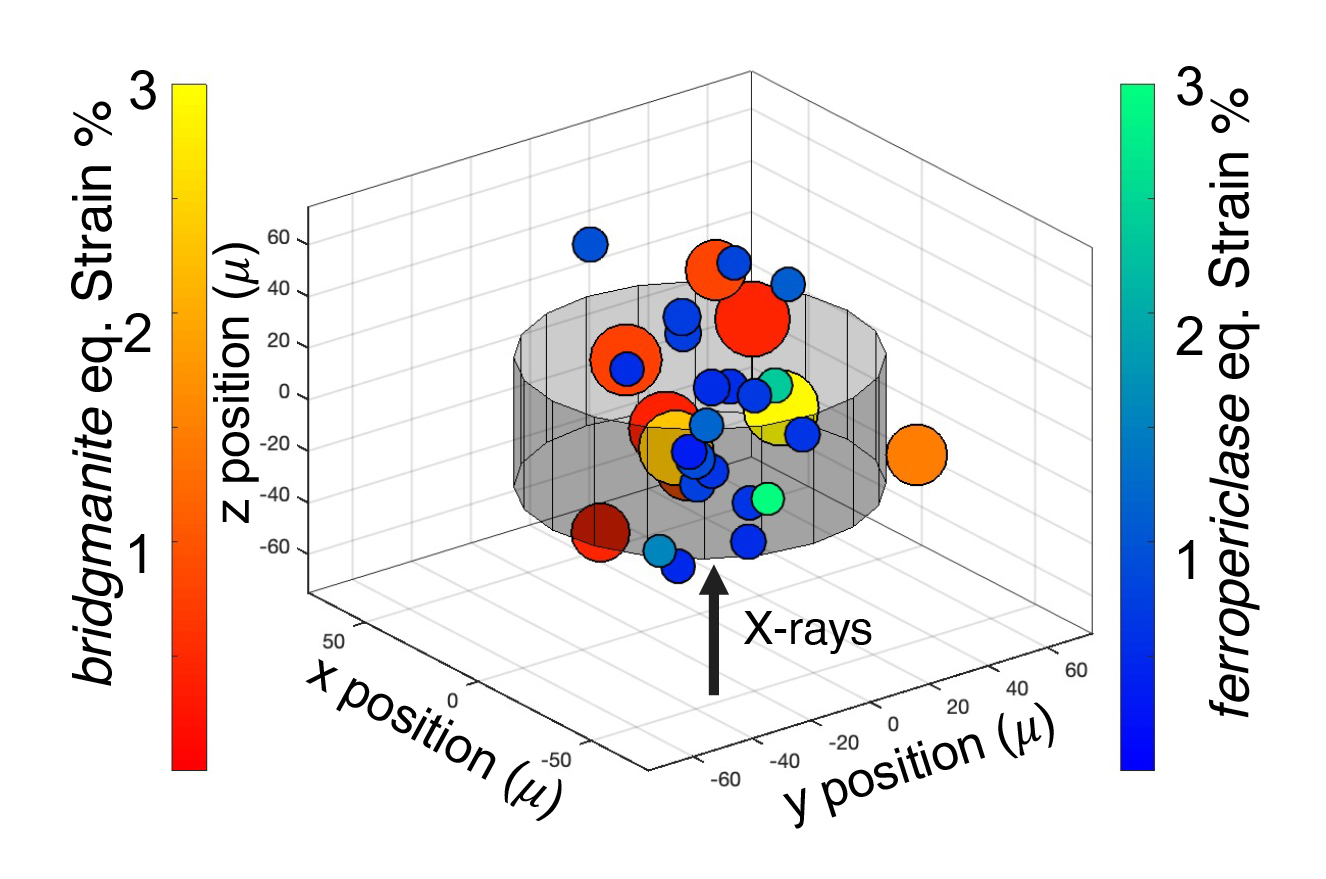To explore what happens to minerals under the extreme conditions in Earth’s mantle, researchers from the Advanced Light Source (ALS) and UC Berkeley developed an x-ray technique that bridges the gap between methods that reveal bulk properties and those that focus on individual crystals. Use of the technique has shed light on the dynamics of tectonic-plate subduction in Earth’s lower mantle. The results were recently published in the journal Science Advances.
“We wanted to understand the microstructural evolution and distribution of the two main constituent minerals in Earth’s lower mantle: bridgmanite, which is Earth’s most abundant mineral, and its accompanying minor phase, ferropericlase,” said Brian Chandler, a graduate student in UC Berkeley’s Department of Earth and Planetary Science and an ALS doctoral fellow. “How these phases are spatially distributed and evolve together is key to understanding the evolution of the Earth’s lower mantle.”
At ALS Beamline 12.2.2, the researchers implemented a technique called far-field high-energy diffraction microscopy (ff-HEDM), also known as 3D x-ray diffraction or, more colloquially, multigrain crystallography. To produce bridgmanite and ferropericlase, a sample of olivine was subjected to 1800 K and 30 GPa at the beamline, using a laser-heating system and a diamond anvil cell. A software package (HEXRD), created by co-author Joel Bernier at Lawrence Livermore National Laboratory, identified and extracted crystal information from each phase.
The results confirmed the formation of a ferropericlase matrix around the bridgmanite, a configuration implicated in the stalling of slab subduction in Earth’s lower mantle. They also showed that bridgmanite crystals use “twinning” (mirrored intergrowth) as a stress-relief mechanism, which likely contributes to the lack of appreciable seismic anisotropy in the upper portion of the lower mantle.
“This one technique enables us to determine how phases are spatially distributed, how the crystals of each phase are oriented, and how much stress they are under—all in a single experiment,” said Chandler. “It opens the door to new ways of studying materials under high pressure and temperature, enabling predictions about the behavior of minerals and the evolution of Earth’s interior.”

B. Chandler, J. Bernier, M. Diamond, M. Kunz, and H.-R. Wenk, “Exploring microstructures in lower mantle mineral assemblages with synchrotron x-rays,” Science Advances 7, eabd3614 (2021), doi:10.1126/sciadv.abd3614.